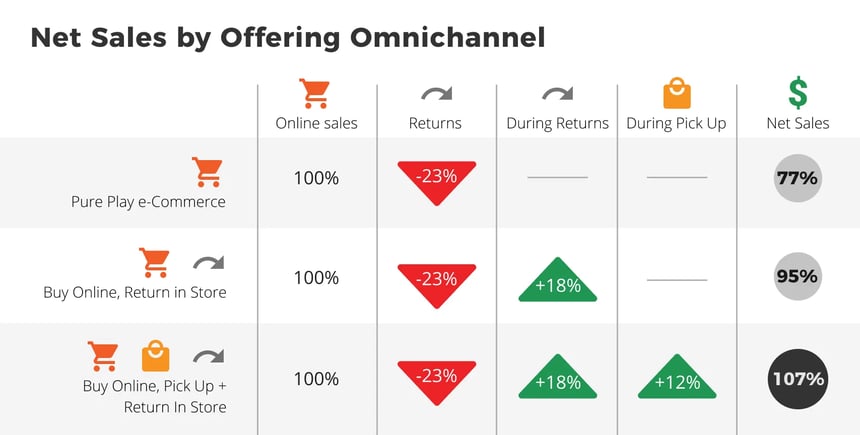Headquarters
175 S Main St Suite 1310,
Salt Lake City, UT 84111

In today's digital age, consumers are perpetually online, continually browsing and exploring the web for new products and experiences. Consequently, a significant number of retailers heavily rely on online sales for their overall revenue. However, online conversion rates are notably lower than in-store rates, averaging between 2-4% across various industries. In contrast, in-store conversion rates can reach up to 20% to 40%. Additionally, customer acquisition costs are considerably higher online, and the average return rate for online purchases is approximately 20%.
So, what can retailers do to address the high return rates that erode profits and resources? Enter BORIS. If you're unfamiliar with the term, BORIS stands for Buy Online Return In-Store. It's a strategy that many retailers overlook, yet it holds significant potential for enhancing the profitability of online shopping.
In this blog, we will explore the benefits of the Buy Online, Return In-Store approach for your organization and examine the distinctions between traditional BORIS and its omnichannel BORIS.
"Omnichannel" is a popular term in retail, but there’s a big difference between traditional Buy Online, Return In-Store and Omnichannel Buy Online Return In-Store. That difference can turn a good customer experience into an exceptional one.
Traditional BORIS allows customers to return online purchases in-store, but store associates have no background on who the customer is. This happens because older Point of Sale (POS) systems don’t provide a complete view of the customer’s online and in-store purchase history, browsing behavior, or wishlist. While offering return in-store is helpful, it lacks personalization.
Omnichannel BORIS takes it a step further by using mobile tools like clienteling apps. These apps help store associates process returns quickly—so customers can skip long lines—while also giving them a full view of the customer’s shopping history. This allows them to suggest relevant products, increasing upselling and cross-selling opportunities. But that’s not all. With a strong omnichannel strategy powered by a Distributed Order Management System, retailers can resell returned items at full price by fulfilling online orders directly from stores.
Even though online shopping is huge, brick-and-mortar stores still have a major advantage. They offer a more personalized experience while also boosting conversion rates and profits. So why not combine the best of both worlds and create a seamless shopping experience?
As previously noted, online conversion rates are typically lower than those in physical stores. Implementing Buy Online Return In-Store can help bridge this gap. Recent studies indicate that 62% of shoppers are more likely to shop online if they can return their purchases to a physical store, leading to increased online conversion rates and enhanced customer satisfaction.
Customers appreciate the convenience of immediate refunds when doing returns in-store, as opposed to the delays associated with shipping returns back to the retailer, awaiting warehouse processing, and reimbursement.
In today's market, approximately 75% of online shoppers have utilized free shipping offers in the past six months, highlighting the importance of this feature. However, providing free shipping, especially for returns in-store, can be logistically challenging and costly for retailers. By adopting Buy Online Return In-Store, where customers return items in-store, retailers can significantly reduce shipping expenses while maintaining high levels of customer satisfaction.
Often, returns are due to issues like sizing or color preferences rather than dissatisfaction with the product itself. Allowing in-store returns provides customers the opportunity to exchange items immediately, thereby retaining revenue. Moreover, once customers are in-store, they are more likely to make additional purchases, capitalizing on the higher in-store conversion rates. Encouraging in-store returns not only boosts immediate sales but also fosters long-term customer loyalty.
By integrating Buy Online Return In-Store into their operations, retailers can enhance the shopping experience, reduce costs, and drive revenue growth.

* * *
If you're ready to offer your customers a seamless omnichannel experience while boosting your profit margins, reach out to the HotWax team today. Explore our solutions, including clienteling, distributed order management, and more.






